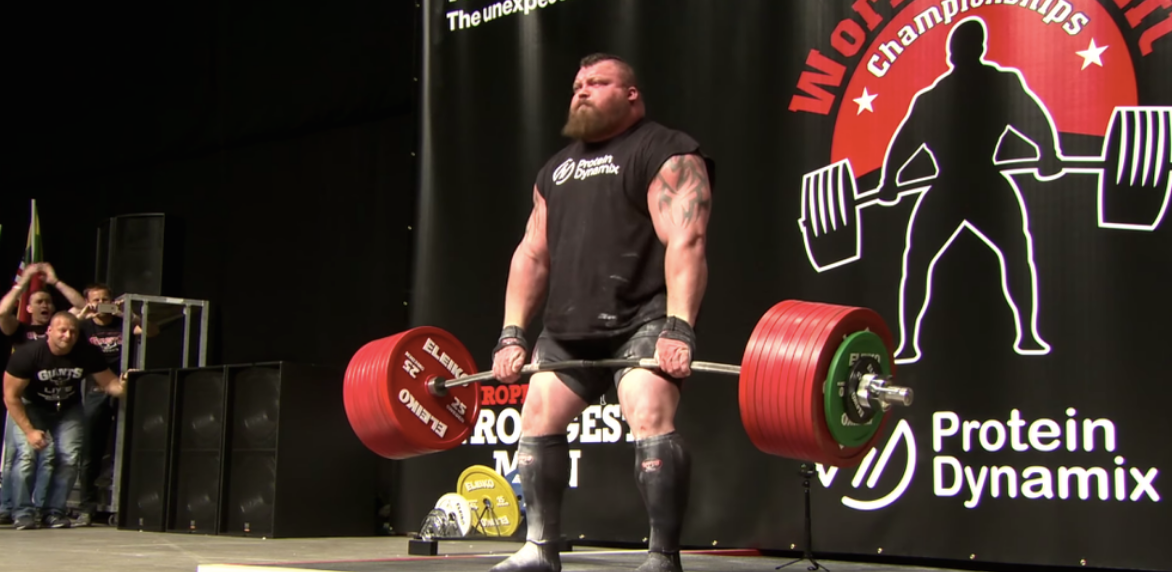Currently relegated to the world of science fiction, gene doping is a very plausible and potentially real form of human performance improvement. The science that will allow disease to be cured or treated through genetics will also have the potential to be used for enhancement, modification and performance improvements in healthy individuals.
Elite athletes will be born with the genetic advantages that gene doping aims to replicate. So… does gene doping allow for an “equalling” of the playing field?
Or does it just allow for abuse and the enhancement of already gifted individuals?

There is currently little hard evidence that gene doping (in its purest form) has been utilised in sports. In the truest sense, gene doping would involve the use of substances that directly impact gene expression on specific genes changing how a gene encodes a particular protein. Methods of gene doping would include but are not limited to injecting gene carriers, cell transfer and direct editing.
Whilst no hard evidence of successful gene doping exists in sports, development began very early in the life of genetic science. With papers highlighting that mice with alterations in IGF-1 (insulin-like growth factor 1) causing over-expression of IGF-1 were stronger than their counterparts, and again studies highlighting that mutations in the gene MSTN in animals caused lower levels of myostatin leading to larger muscles, lower body fat and higher strength.
In 2004 the “Marathon Mouse” was born/created (however you want to call it) by altering a gene’s encoding. The mouse had enhancements in slow twitch muscle fibres which are associated with endurance activity. Since the early 2000s coaches have contacted multiple academic bodies and researchers searching for methods of athlete enhancements through the power of genetics. In 2003 The World Anti-Doping Agency added gene doping to the list banned performance enhancing practices, with methods of gene doping detection being developed with many still in development.
Many potential genes are of interest to those looking at gene doping such as:
Endurance: ACTN3, ACE, PPARA, IGF2, AMPD1 and others.
Power: ACTN3, NOS3, TRHR, AGT, MSTN, IGF2 and others.
Injury prevention: COL5A1, COL1A1, AMPD1 and others.
As mentioned earlier, some individuals will already be born with the genetic enhancements that doping would aim to replicate. Let us take a look at the 2017 World’s Strongest Man competition, axle press world record holder and one of only two people to deadlift 500kg, Eddie Hall. Eddie has some of the standard gifts that gene doping would aim to duplicate:
Eddie has been born with the variants in IGF2 linked with increased strength, especially back strength. Eddie also has variants in the gene NOS3, which means he produces more nitric oxide naturally, allowing for superior vasodilation (widening of blood vessels) delivering more nutrients and oxygen to muscles which enhances all forms of exercise. He also has specific variants in the gene MSTN linked to deadlift performance.
Eddie also has a variant that gene dopers would want to alter for those in endurance-based sports, that being the ACTN3 variant rs1815739 TT. However, being a primarily power athlete, Eddie may have been superior with the power associated variant of this gene, rs1815739 CC. It is difficult to see if this change in Eddie would have led to greater power, or if having the “endurance” version of this gene allowed for some superiority in events requiring stamina. Therefore, it is not so simple for those aiming to change genetics to say one variant is superior to another.
No one is born with all the gifts. Although we can see with Eddie, he certainly has got some genetic gifts that are inbuilt but without firm, dedicated training and much sacrifice Eddie would not have reached his goals. If gene doping existed and was easy to do you could introduce more super rare MSTN variants into Eddie, change his ACTN3 variant, etc. but by doing so, would he have been any better off? He was the world’s strongest man regardless – you can’t get any better than being number 1. On a more philosophical point, would Eddie even be Eddie if he no longer had the gene variants he was born with…
Weightlifter and GB athlete Rooni Siraj had this to say on gene doping:
“There are certain countries that have a huge amount of funding/support, the athletes of these countries are performing at the same level or better then the athletes who failed doping tests and steroid analysis in the 80s, yet these new athletes are passing tests. Their physique and ability is different to anything I have seen. I think it’s (gene doping) already here, especially in places where there is little ethical control.” Rooni Siraj, 2020.

Epigenetic change does not represent the dark art, science fiction-esque view of gene doping as epigenetic change does not actually alter an individual’s DNA sequence. However, epigenetic change does alter gene expression and it is far easier to cause epigenetic change, than to say cause a targeted gene mutation. DNA methylation (DNAm) is one mechanism of epigenetic change and is one of the most researched methods. DNAm is a process where a chemical (methyl groups) attach to DNA causing methylation. More methylation, known as hypermethylation actually suppresses gene expression and is a vital part of human development and ageing as well as playing an important role in cancer development. As hypermethylation causes suppression of gene expression it could be seen as acting like an actual gene mutation and therefore is of great interest to those looking at gene doping.
Epigenetic change can come from our lifestyle such as training, nutrition, supplements, pollution, etc. therefore, one could cause a differing gene expression if they knew the lifestyle intervention to implement and the correlation to the gene being targeted. As research continues, this avenue will open many potential treatments and super personalised, tailored interventions for those looking to stay healthy and help prevent disease. It will also have the potential to be used to enhance or positively modify an individual.
In terms of human enhancement, epigenetics may be the “clean” way to gene dope, through clever training principles, nutritional guidance and correct supplementation an individual can perhaps overcome not having gifted variants or be able to negate the negative ones whilst accelerating the positive.
Away from sports enhancement, gene doping and editing has raised many ethical and moral questions. With inequality being a highlighted and hot topic in recent times, the usage of gene editing to produce stronger, more attractive and smarter children for those with the money to pay for such treatments is in the realms of reality, furthering the gap between the rich and the poor. In sports this may equate to those with greater funds being able to produce the better athletes, not just through superior coaching, nutrition and equipment but fundamentally through the installation of genetic traits.
However, for all the ethical fears of potential gene editing, targeted epigenetic changes and others it is hard to argue the massive potential good this science can do. From the creation of new disease treatments, the prevention of disease, improving the world population’s quality of life and easing the pressure on healthcare systems. Whatever the future holds for gene doping in sports I don’t believe it can be stopped, for as long as there is a way to be better, to improve, to be stronger and faster, humans will seek it out.
By Chris Collins,
Head of science at Muhdo Health.
Muhdo Health analyses many variants linked to athletic prowess and aims to give realistic and practical interventions to bring out the most gifted aspects whilst negating any negative gene variants with a firm concentration on epigenetics.